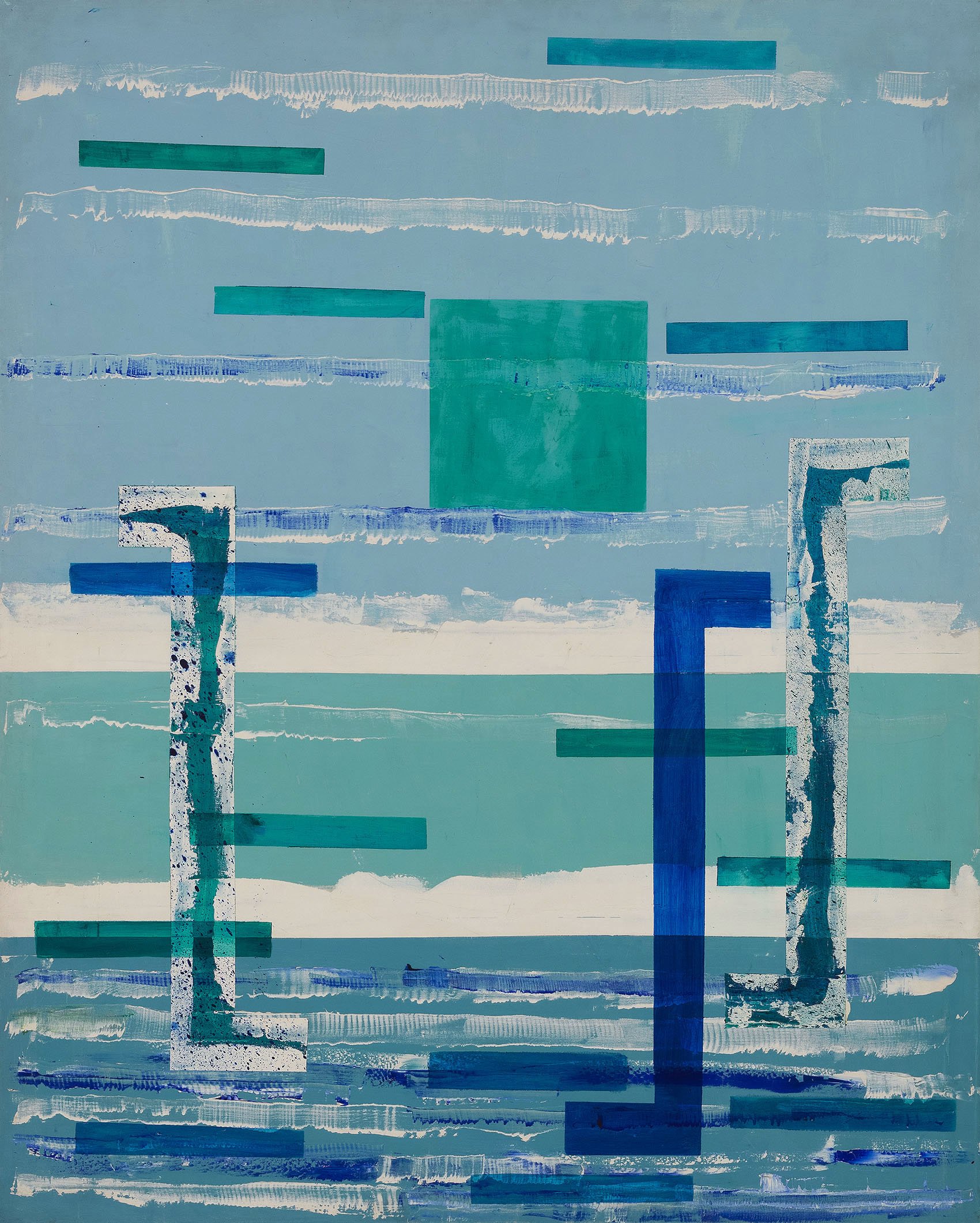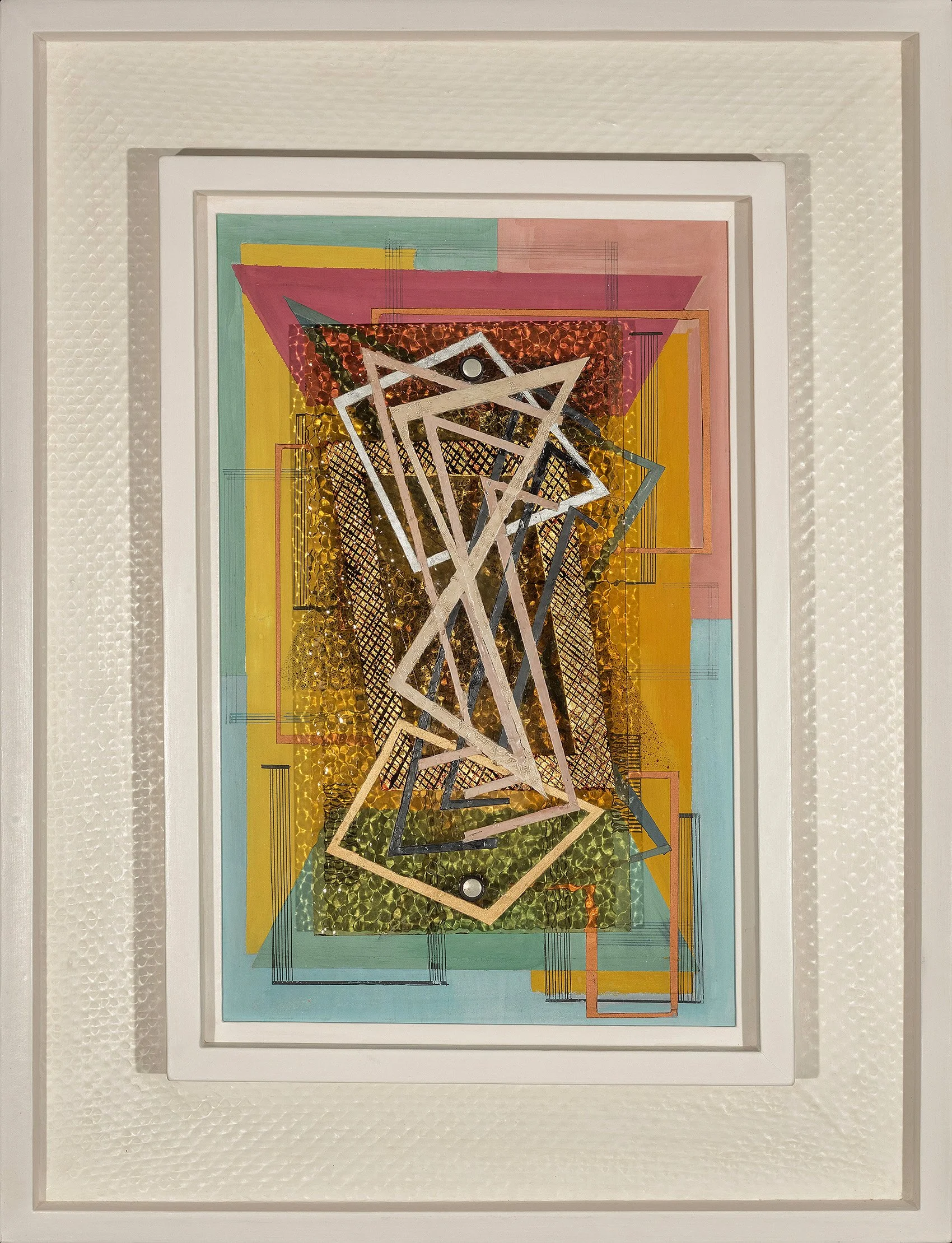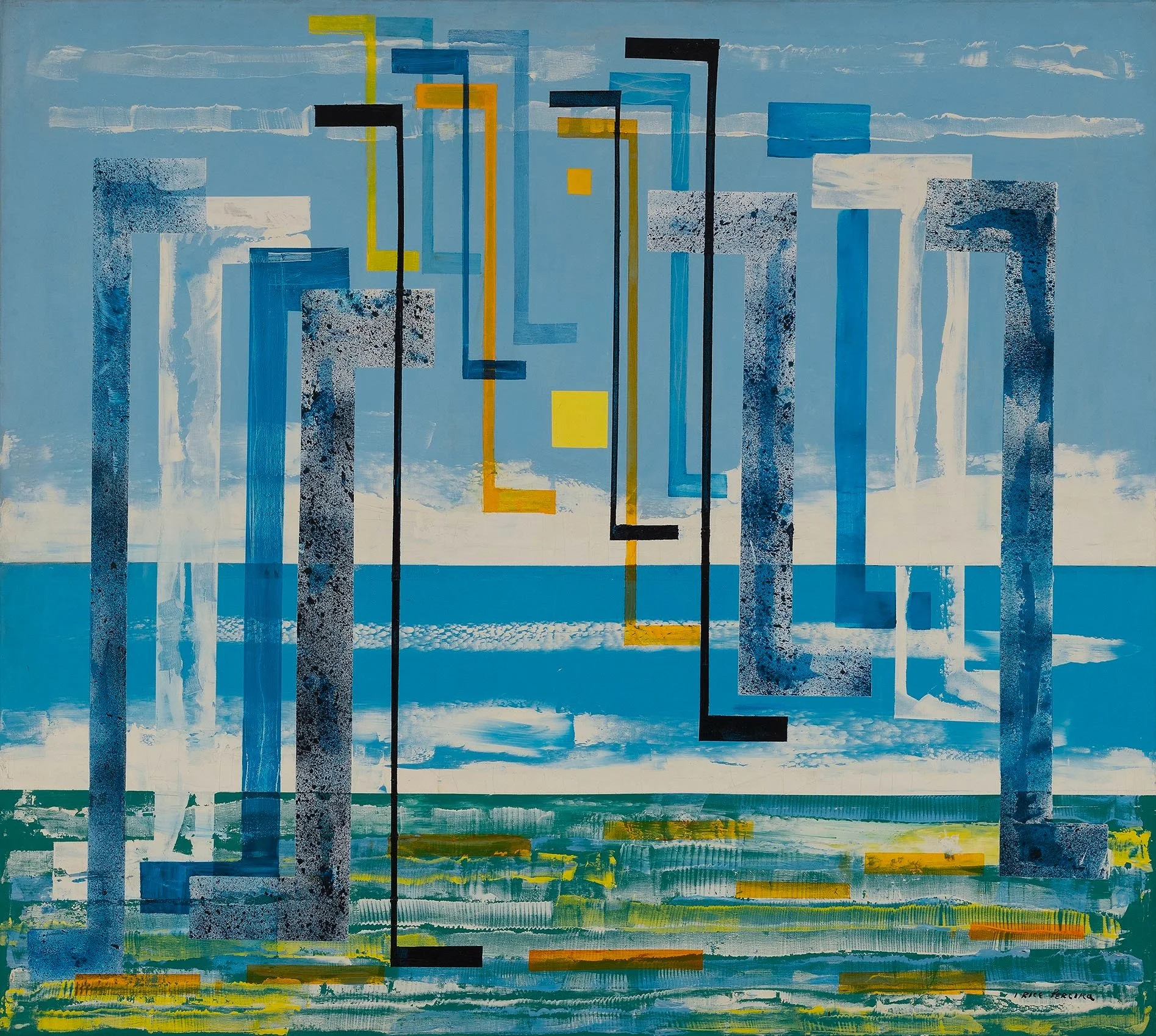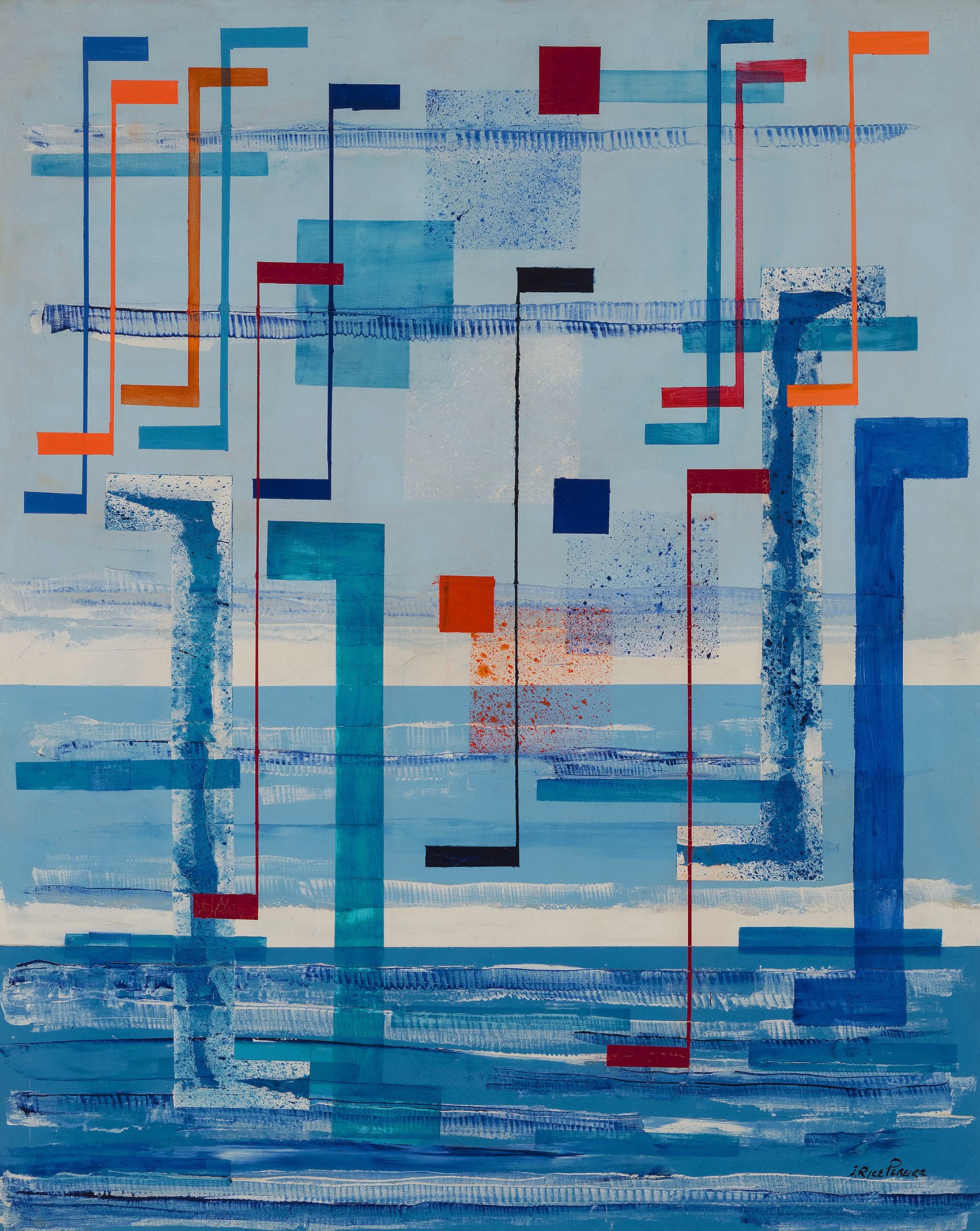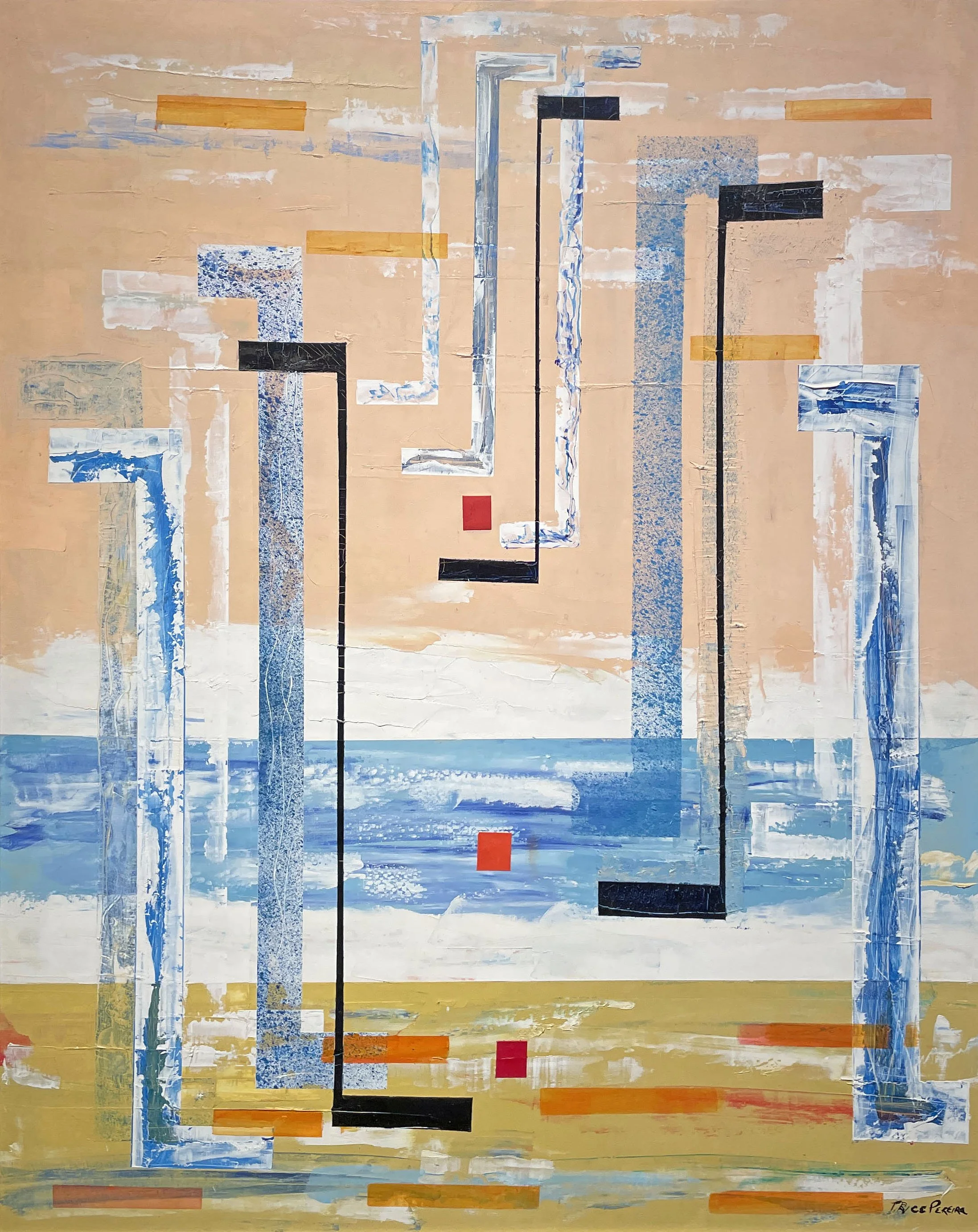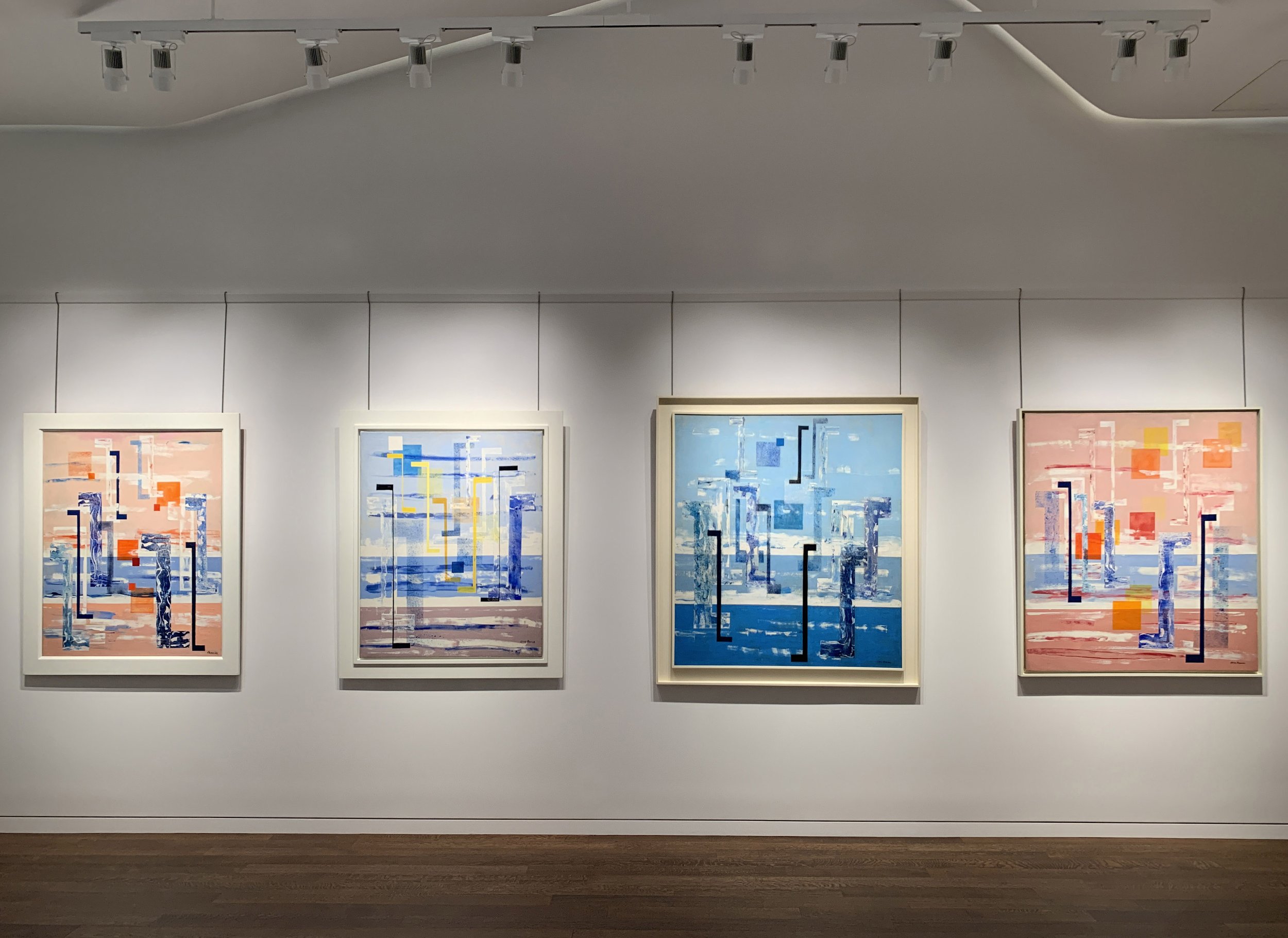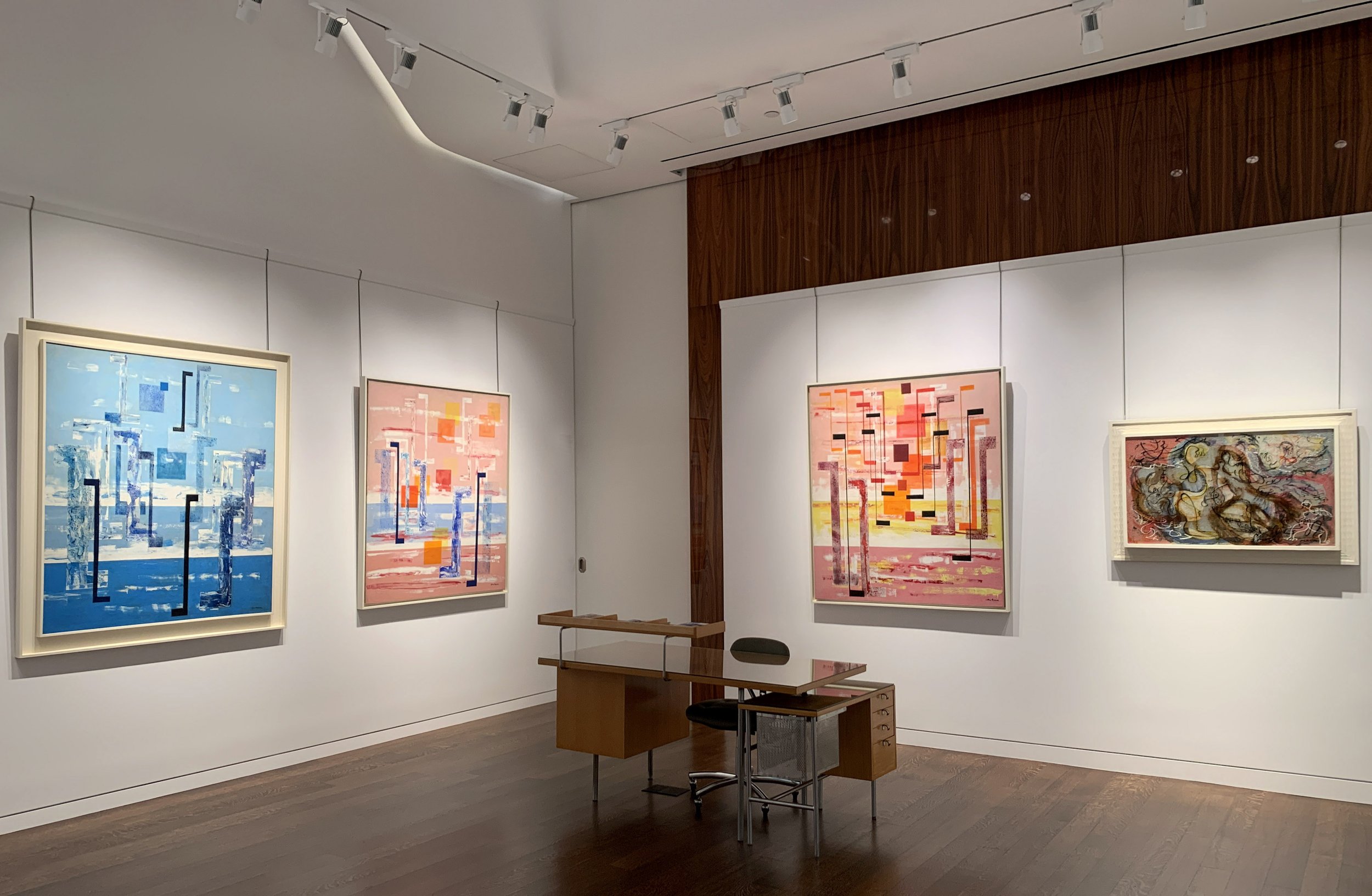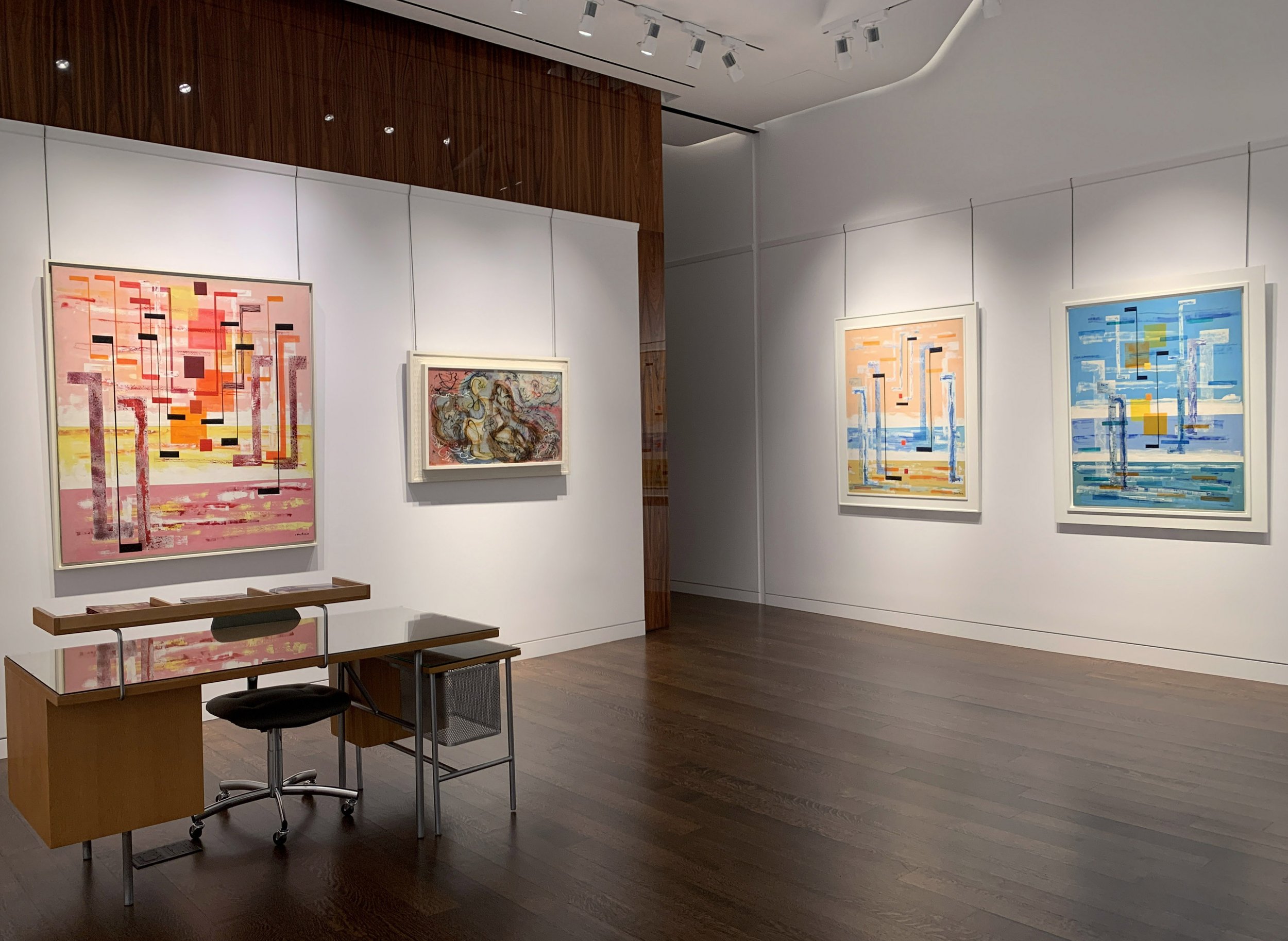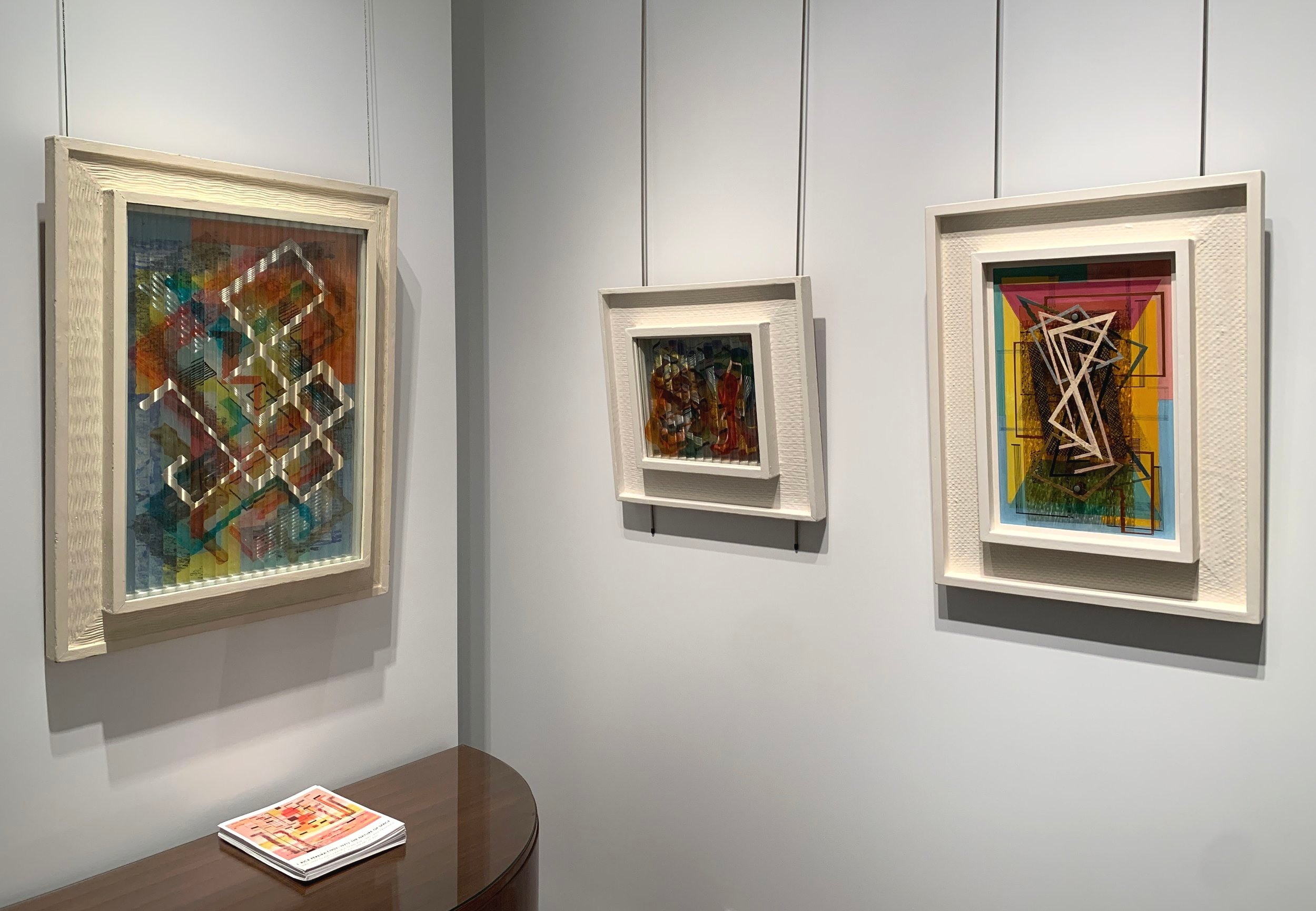Nov. 15, 2022 - Jan. 27, 2023, extended through Feb. 17, 2023
Installation Views | Essay | For availability and pricing, call 212-581-1657.
Installation Views
Essay by Emily Lenz
I. Rice Pereira (1902-1971): The Nature of Space, an exhibition of 1940s glass constructions and 1960s Lapis paintings runs November 15, 2022 through January 27, 2023. With 5 glass constructions from 1944-1952 and 12 significantly sized paintings from 1960-1970, the exhibition shows how abstract artist Irene Rice Pereira’s exploration of light and space in her groundbreaking glass constructions was applied to her later paintings.
Pereira first worked in glass in 1939 while teaching at the Design Laboratory, a WPA effort to establish a Bauhaus-style school in New York. There she had access to industrial designers, a workshop, and a variety of materials. Pereira painted geometric compositions on clear, hammered or fluted glass which she layered to capture light and movement. Six constructions were exhibited at Peggy Guggenheim’s Art of This Century in a solo exhibition in 1944. About 40 glass constructions from 1939-1952 have been identified; many were acquired by museums when first exhibited.
Irene Rice Pereira received a solo exhibition (held jointly with one for Loren McIver) at the Whitney Museum of American Art in 1953. They were the first women to receive solo exhibitions at the institution. Ahead of the Whitney exhibition, both Life and Artnews featured articles on how Pereira made her glass constructions.
At the height of her fame in the early 1950s, Pereira returned to painting in oil on canvas. Pereira applied knowledge from the glass constructions onto a single surface, using varying textures and degrees of transparency in her paint application. Returning to traditional materials allowed Pereira to scale up her work. The glass constructions were limited in size- the largest glass pieces were 24 1/2 x 40 inches (such as Shooting Stars, 1952 at the Metropolitan Museum of Art and Mirror Image, 1952 in our exhibition). Through the 1950s Pereira distilled her geometry while increasing the size of her canvases. Many 1960s Lapis paintings measure 50 x 56 inches.
Irene Rice Pereira understood the Atomic Age required a new understanding of man’s place in the world and expanding universe. She synthesized her theory on the nature of space in the 1950s, collecting the ideas of ancient philosophers like Euclid and Plotinus, Enlightenment thinkers like Kant, 19th century mathematicians including Charles Howard Hinton, and recent theories by Carl Jung in organized notebooks, recorded alongside notations on her paintings and poems. In 1956, Pereira published excerpts from her book The Nature of Space in the catalogue for her Wellons Gallery exhibition in New York.
By the late 1950s, Pereira found her approach to transform her writing into visual form. First she extracted her philosophical ideas into poetry and then slowly the poems inspired paintings. One poem The Word, written in 1958, stimulated 33 paintings over the next three years, each titled with the specific line that provided the inspiration. Pereira knew her writing may not be accessible to all, so she relied on the beauty of her paintings to reach more people.
As the world entered the Space Race, Pereira felt the single-point perspective of the Renaissance and a static horizon line no longer applied. In 1957, she published a portfolio of writing and diagrams titled The Lapis, which demonstrated the evolution of man’s perception of space from primitive through ancient and medieval to Renaissance eras. Over the next few years she explored how to convey the new perception of space into paintings. In 1960, Pereira settled on a structured composition with a limited vocabulary of symbols (z-shaped lines, squares, rectangles, and long brush strokes) on a tripartite field. With these symbols, Pereira explored how adjustments in their color, texture, transparency, and placement create a sense of infinite depth and mood. In the Lapis paintings, Pereira found a way to synthesize her artmaking, poetry, and philosophy.
Pereira’s drive to create resulted from seeing so much fracturing in the postwar period. She felt a higher art was needed to elevate humankind to a peaceful unity that could only be achieved with a new understanding of man and his place in the universe. In Pereira’s own words, she described her philosophy as:
It is a new orientation in relation to the space age. The mind perceives the object, the world, the universe and the cosmos as spatial imagery. The barriers of 2500 years of a closed-in finite universe are removed, as well as contradictions between the finite and the infinite. There is no duality. Man’s destiny in the space age is assured. The structure of the new optic demonstrates that we do not perceive solids as concrete mass but in a dematerialized form, a spatial imagery as light is deflected on contact with objects and a spatial imagery is reflected or mirrored back in successive wave formations. Descartes shows objects as chunks of space or geometry incarnate. This study shows space as the geometry of light.
The Transcendental Formal Logic of the Infinite, the Evolution of Cultural Forms, 1966
In 1968 an exhibition of Lapis paintings and meditative drawings toured North Carolina institutions (Wilmington College, the Weatherspoon Art Gallery and the Mint Museum). Pereira was featured in the 1969 Corcoran Biennial with 5 Lapis paintings dating from 1962 to 1967 (including Primordial Blaze of the Absolute, 1962 in our exhibition). The Corcoran republished The Nature of Space in 1968 with a foreword from director James Harithas and The Lapis portfolio in 1970.
Public institutions with Lapis paintings include: Arkansas Museum of Fine Arts; Blanton Museum of Art; Brooklyn Museum; Lowe Art Museum; National Gallery of Art (Corcoran Collection); Rhode Island School of Design; Rose Art Museum; Skidmore College; Smithsonian American Art Museum; Syracuse Museum of Art; and University of Arizona Museum of Art.



